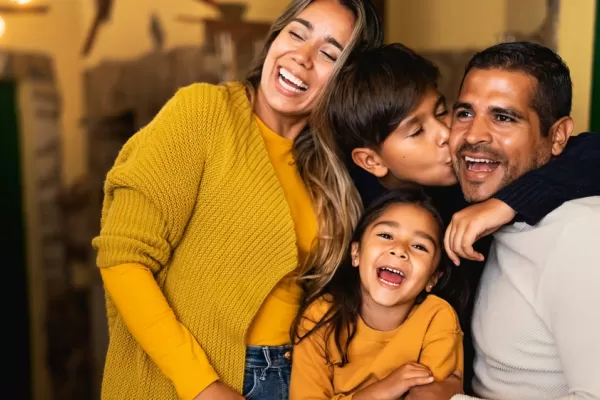
Key points
- Culture shapes how families manage stress and support each other.
- Parenting styles reflect traditions, values, and resilience strategies.
- Language brokering impacts children’s identity, roles, and coping skills.
- Discrimination adds stress, but strong cultural identity builds resilience.
Every family experiences stress. It may come from work deadlines, school pressures, financial worries, or moments of exclusion and discrimination. But while stress itself is universal, the ways families cope with it are deeply shaped by culture. Traditions, values, and expectations influence how parents guide their children, how children respond, and how families lean on one another when challenges arise.
Coping is never just an individual act. It happens within families, influenced by shared beliefs and cultural practices. In immigrant households especially, stress management often means drawing on culture as a resource, a set of strategies that can both buffer hardship and sometimes introduce new pressures. Understanding this cultural lens is essential to grasping how families navigate adversity.
Parenting and Family Relationships
Parenting is one of the clearest areas in which culture shows itself. How parents guide children through stress often reflects generations of belief about what it takes to survive. In some families, discipline is seen as preparation for a harsh world. Rules are strict, expectations are high, and mistakes are treated as lessons in toughness. In other families, parents emphasize warmth and communication, believing resilience grows best in a safe and open space. Neither style exists in isolation. Most parents blend both, adjusting to circumstances as they arise.
Popular labels like “tiger parenting” flatten these realities. They ignore how families adjust their methods depending on context. A parent who pushes for academic success may also spend evenings offering quiet encouragement. Another who appears lenient may be instilling values of independence and self-reliance. Research shows that children benefit most when expectations are paired with care. High standards can motivate, but they must be balanced with emotional support. Without that balance, pressure can turn into strain. With it, children often learn to face stress with confidence rather than fear.
Cultural frameworks also matter. In collectivist traditions, children may be taught to place family above self, building strong networks of support. In individualist traditions, children may be urged to assert themselves, gaining tools of independence. Many immigrant families straddle both systems, teaching loyalty to family while also urging adaptation to new environments.
This balance is delicate. Stress moves quickly across a household. When parents model constructive coping, children often carry those lessons forward. When coping becomes rigid, whether through control without care or closeness without guidance, stress can multiply instead of ease.
Language, Identity, and Responsibility
In many immigrant households, children carry more than homework in their backpacks. They also carry the role of interpreter. At school meetings, in doctor’s offices, or even while setting up a phone plan, it is often the child who explains, translates, and guides.
This practice is called language brokering. It looks like a simple act of translation, but it is much more than that. It shifts responsibility from parent to child, changing how stress is shared within the family. For some young people, brokering feels empowering. They gain pride in helping, confidence in their skills, and a sense that their family trusts them deeply. For others, it feels like a burden. Each form, each conversation, adds to the weight of adult responsibility long before they are ready for it. Research with Mexican-origin adolescents has found that this weight is not only emotional; stressful brokering moments are linked to shifts in cortisol, the body’s stress hormone. But when children feel confident in their role, the biological toll is smaller. Belief in their ability to handle the task makes a real difference.
At the same time, language is also tied to identity. Children who move between languages often move between cultures. This can create pride and flexibility, but also confusion and tension. Some feel they belong in both worlds, others in neither. Coping, in this sense, is not about removing stress. It is about finding balance: holding on to heritage while still building a place in a new society.